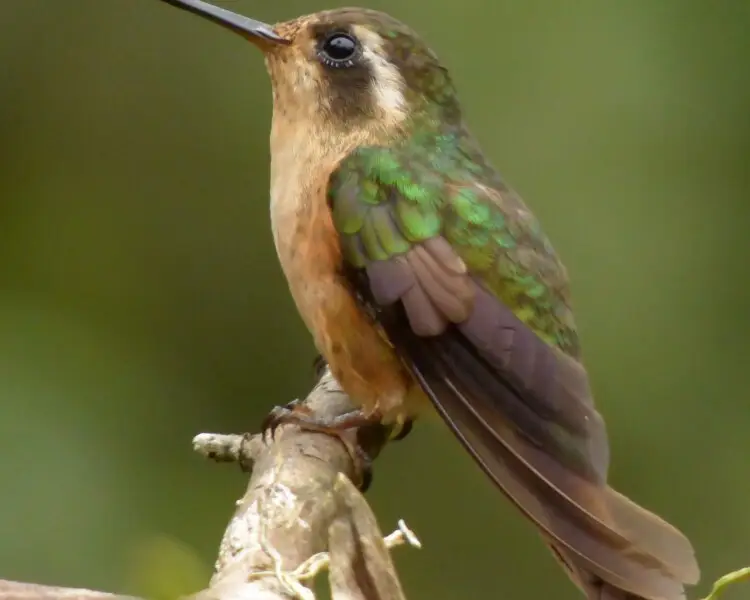



The speckled hummingbird (Adelomyia melanogenys ), is a species of hummingbird. It is the only member of the genus Adelomyia. It inhabits Neotropical montane cloud forests at elevations of 1,000–2,500 meters and is confined to the Andes of Argentina, Bolivia, Peru, Ecuador, Colombia and Venezuela; as well as to some isolated montane forest in western Ecuador and Venezuela. In Ecuador, it ranges across both eastern and western slopes of the Andes and occupies a broad altitudinal range from subtropical forests (1400 m) to cloud forests (3000 m). In addition, one isolated population inhabits the Chongón Colonche cordillera in coastal evergreen montane forest (600 m) located ca. 130 km away from the Andes.
The speckled hummingbird is a monomorphic species, making females and males indistinguishable. Adults measure approximately 8 cm, or 3 inches, in length (from bill to tip of tail). The upper plumage is a glossy green/bronze. The underside is pale, with green and bronze specks. It has a black cheek patch below its eye with a white stripe above.







The speckled hummingbird is a solitary species. They neither live nor migrate in flocks and there is no pair bond for this species, making them a mainly sedentary species. Nevertheless individuals may disperse to lower altitudes as the breeding periods finish.
The species does not gather with others to feed, even at flowering trees. Speckled hummingbirds feed on the nectar of flowers, often near the ground, either from short-tubed flowers or holes at the base of long-tubed flowers. Like other hummingbird species, it is likely that the speckled hummingbird will also feed on insects, for additional nutrients. The species may also collect small insects that are caught on or in the nest.
Males do not participate in the any part of nest building or brooding of the young, and disengage with female partners after copulation. Though, both males and females may be promiscuous, having multiple partners.
Female speckled hummingbirds incubate and feed nestlings. A clutch consists of two white eggs; measurements consist of 12.4 mm × 8.7 mm and 12.6 mm × 8.6 mm. The incubation period lasts approximately 17–20 days. The species broods for shorter durations than most hummingbirds during incubation. Speckled hummingbirds often travel several kilometers to avoid competition, making visits to the nest less frequent. After the young hatch, the adult continues brooding hatchlings for 7–8 days. After brooding and until the young have fledged, the adult will no longer enter the nest and instead perches nearby, potentially watching for predators. This behavior is curious, as perching outside a nest may alert predators of its location. Nests can be found all year round, and consist of a bulky cup shaped of moss and cobweb, lined with plant fibre. The construction of nest have been observed on moss-covered trunks or on rocky ridges, at the entrance of caves, at a height of 1–3 m.
Not globally threatened (Least Concern). A very common hummingbird of moderate elevations in the Andes. Particularly abundant in the Andes above of Cali, Colombia, with densities of at least 10–12 pairs/km².